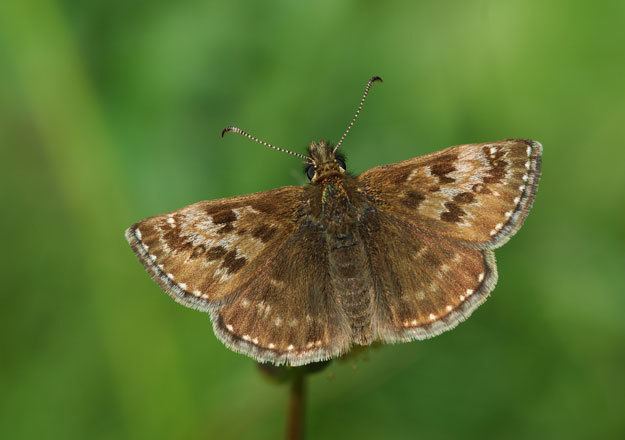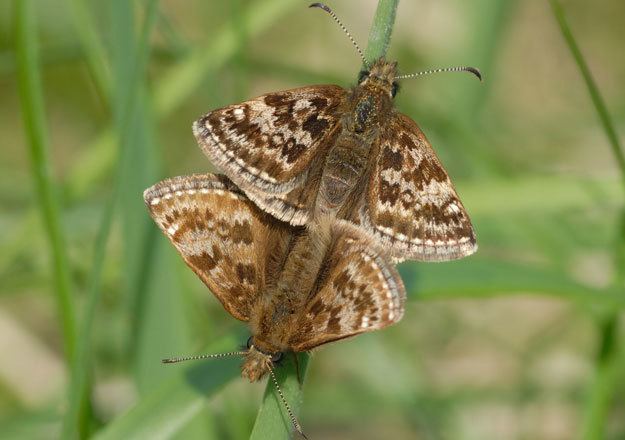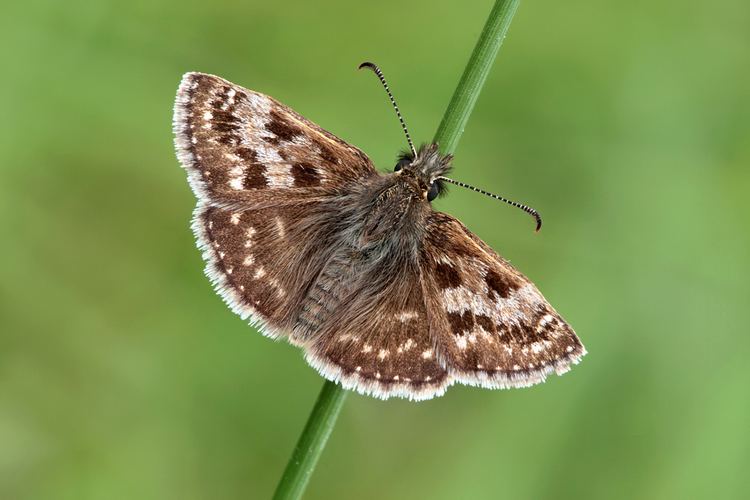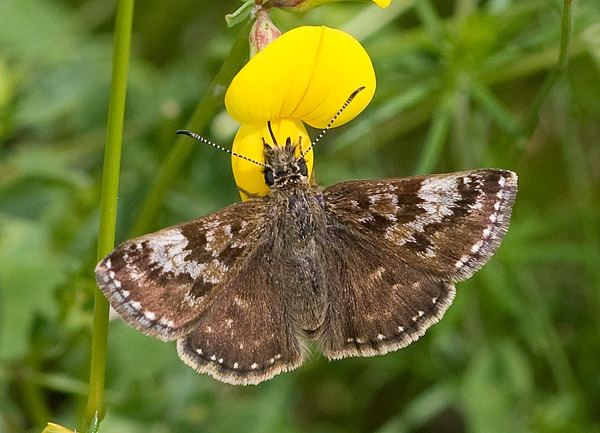Genus Erynnis Higher classification Duskywing | Family Hesperiidae Scientific name Erynnis tages Rank Species | |
 | ||
Similar Butterfly, Grizzled skipper, Skipper, Butterflies and moths, Duskywing | ||
The dingy skipper (Erynnis tages) is a butterfly of the Hesperiidae family. It ranges from Europe across Asia Minor and Central Asia to the Amur region. Erynnis tages favours open grassy habitats up to 2,000 metres above sea level. The insect flies in two generations from May–June and July–August but in northern regions and at the high altitudes, there is only a single generation. Larval host plants in Europe are Eryngium, Lotus, Coronilla, Medicago, Hippocrepis etc. Subspecies are little defined and include E. t. unicolor Freyer, 1852 found in Transcaucasia.
Contents
- Dingy skipper
- Appearance behaviour and distribution in the British Isles
- Life cycle and food plants
- References

Dingy skipper
Appearance, behaviour and distribution in the British Isles

This well-camouflaged, brown and grey butterfly can be confused with the grizzled skipper, the Mother Shipton moth or the burnet companion moth. It is probably the most moth-like British butterfly and normally rests with its wings in a moth-like fashion. It is widely but patchily distributed across Britain. It occurs further north than any other skipper in Scotland with some isolated colonies in the Inverness region. It is also one of the two skippers to be found in Ireland, again with a patchy distribution but the main strongholds along the western side. A variety of habitats are used including chalk downland, woodland clearings, coastal dunes, railway lines and waste ground. It is on the decline in several European countries including the UK and Armenia.
Life cycle and food plants

The eggs are laid singly on the tender young leaves of bird's-foot trefoil (Lotus corniculatus), the favoured food plant (although horseshoe vetch (Hippocrepis comosa) and greater bird's-foot trefoil (Lotus pendunculatus) are sometimes used). The caterpillar creates a shelter by spinning leaves together and feeds until fully grown in August. It then creates a larger tent to form a hibernaculum where it hibernates. Pupation occurs the following spring without further feeding. Adults are on the wing from mid-May till mid-June.

